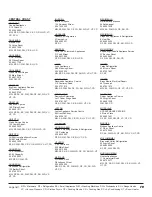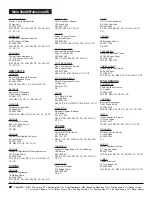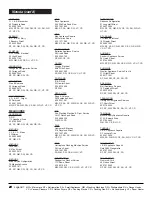
Down-Filled Garments
Always wash down-filled garments separately from other types
of garments. Wet down gives off an odor that will disappear when
the down is dried. Wash down items frequently to fluff up the
down and to retain down’s warmth. When washing make sure
the load is balanced. Add towels if necessary. Always tumble-dry
down garments.
Pillows
Pillows are made from a variety of materials. Wash only if recommended
on the Pillow Manufacturer’s Care Label. Before washing check pillows
for weak seams or holes, and mend. Let the washer fill with water and
add detergent. Let the washer agitate for several minutes and then add
pillows in pairs. This will keep the load balanced. Use the largest
load/water level available.
Blankets
Let the washer fill with water, add detergent, allow detergent to
dissolve, then add blanket. Wash only one blanket at a time.
Permanent Press Clothes
Select a larger load/water level than normal. This will provide
that are Line Dried
more water to help reduce wrinkling and to allow clothes enough
room to move around. Remove clothes as soon as the wash cycle is
complete and hang them up immediately.
Heavy Loads
The SUPER WASH cycle is specifically designed for heavily soiled
loads that require extra long washer periods.
For optimum performance from the machine, we recommend
the following:
•
For heavily soiled clothes, use the REGULAR wash cycle.
•
For lightly soiled clothes, use the LIGHT SOIL wash cycle.
•
For a small amount of lightly soiled clothes, the QUICK WASH
cycle is recommended. This allows you to wash up to 3 kg of lightly
soiled clothing in a shorter period of time.
For best overall results, the mechanical attributes of this
washing machine will be enhanced by the correct usage of
detergents and other laundry aids, and you should always
follow the manufacturer’s instructions.
Further detailed information on the correct usage of detergents is
available from Major Electrical Appliances at 02-8825-9444.
10
Helpful Information
Specialty Care Guide
Item
Suggested Care
Always follow Fabric Manufacturer’s Care Label or instructions when laundering.
Otherwise use the information below as a general guide.











































